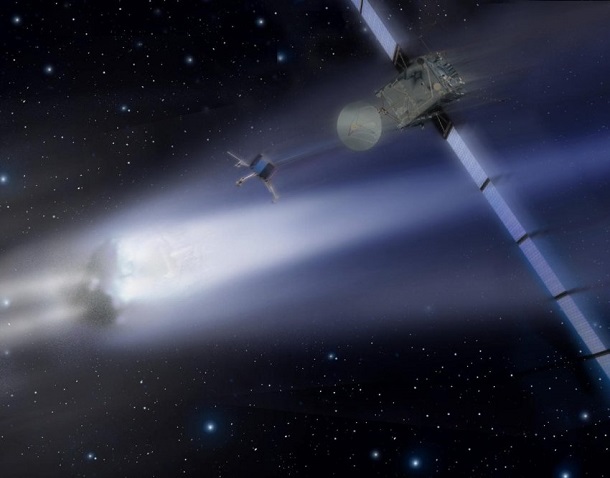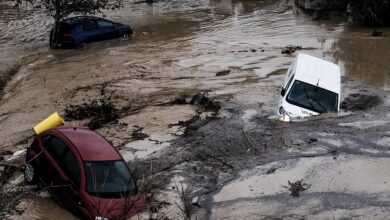Successful separation: The Lander “Philae” is heading towards its target comet “Tschuri”. Because a nozzle is down, the landing could be difficult.
The researchers, the European Space Agency ESA are anxious moments before. In a few hours the “Philae” -Laboratory on the comet 67P / Churyumov-Gerasimenko is (in short “Tschuri”) land. The first important step is to have succeeded: “Philae” has become detached from the space probe “Rosetta”.
The 100-kilogram lander will take about seven hours for the 22.5 km route to the comet “Tschuri”. After the separation of spacecraft and lander broke on Wednesday in the control of ESA in Darmstadt cheers. “We are all glad that” Philae “worked flawlessly in the minutes before the separation,” said Andrea Accomazzo, is hosting the “Rosetta” mission in the ESA.
Now begins the anxious wait to see if the probe healing lands on the comet. Succeed the mission, it would be the first landing of a mini laboratory on a comet.
The planned landing is considered by the ESA as a milestone. Some experts compare the maneuver with the moon landing in 1969. The landing is considered technically extremely gewagtg among experts, partly because of the soil conditions of the comet. In addition now makes it difficult to defect the mission.
On the night of Wednesday turned in an examination of the “Philae” probe out that the so-called Active Descent System does not turn on. It is a nozzle to push the lander at the moment of touchdown on the surface of the comet. Because the attraction is so low that the probe could jump back into space after impact like a rubber ball again.
When attaching the probe to the chassis to cushion the impact. A harpoon and screws on the feet to “Philae” then fix the comet. The shot the harpoon but causes a pulse that threatens the move away from the comet probe again. He should counteract the cold gas nozzle on top of the lander. “She does not seem to be working,” said Stephan Ulamec, “Philae” project leader at the German Aerospace Center (DLR).
After “a night of critical go / no-go decisions” have one but nevertheless decided to land on Wednesday to try as the Esa announced. “We’ll need luck, so we do not end up on a rock or a steep slope,” said Ulamec.
The failure of the Active-Descent system was apparently not the only problem that has appeared in the night. “There were several difficulties with the preparations,” said Esa manager Paolo Ferri. “But we have opted for the ‘Go’. ‘Rosetta’ is ready for separation.” The spacecraft located in the correct orbit and functioning properly. The decoupling of “Philae” will take place as scheduled at 9.35 clock German time. Whether it worked smoothly, but you will learn only against 10 clock, since the signal of “Rosetta” takes about 28 minutes to the earth.
Then it will be quiet for two hours until “Philae” a communication link with “Rosetta” builds. Overall, “Philae” descent to the comet will take about seven hours. With the confirmation of the landing, the engineers expect zwischen 16.30 und 17.30 clock clock CET. “We are concerned, but also excited,” the researchers responsible for the landing of Jean-Pierre Bibring said. “We do not try every day to land on a comet.”
[adrotate group=”13″]

